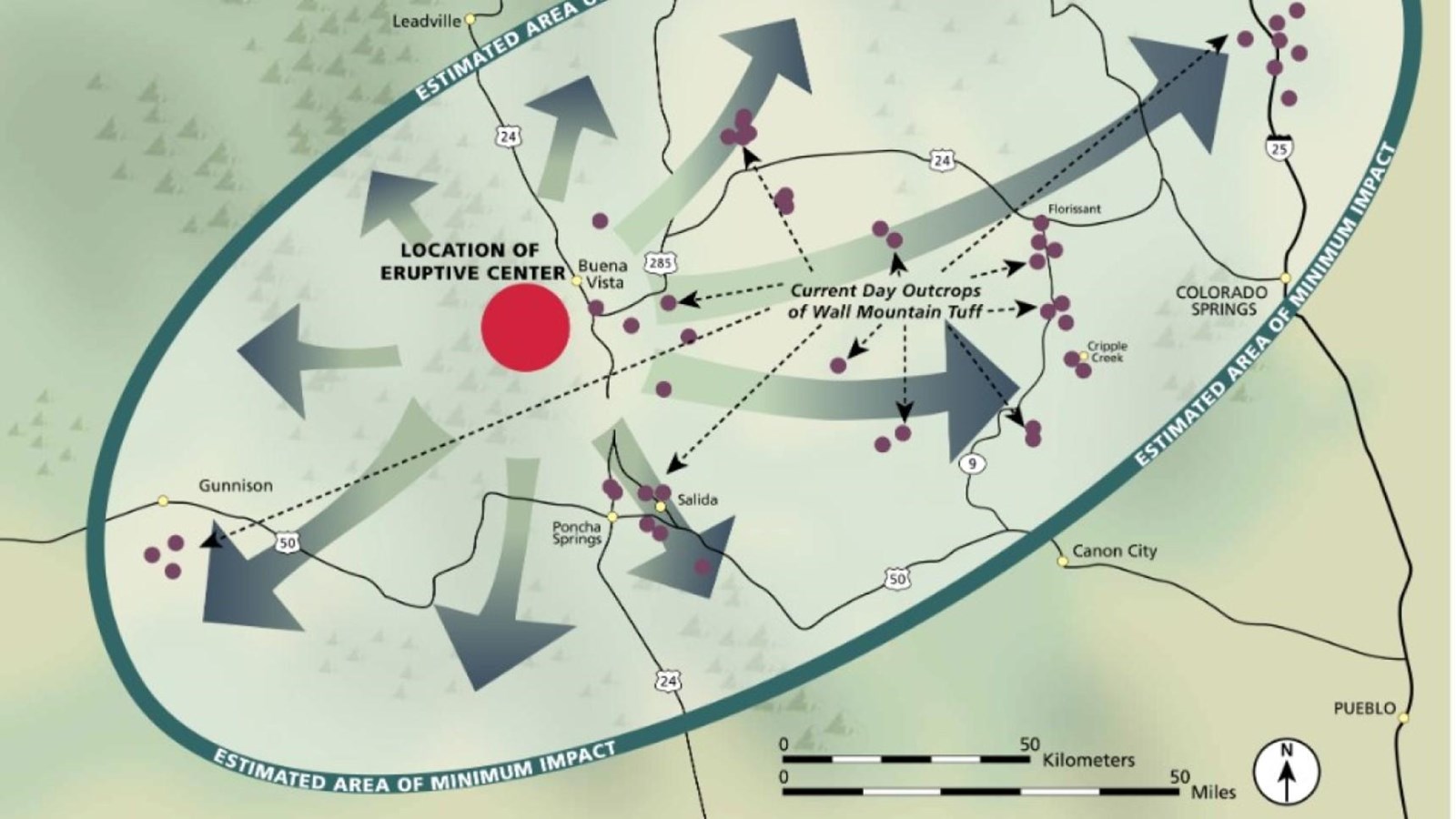Last updated: September 3, 2022
Place
Remnants of Nature's Powerful Forces

Colorado Geological Survey, Larry Scott
Geohertigate Highlight!
Rocks are the record of Earth's heritage. The outcrop here is evidence for a fiery volcanic cloud that swept through this valley one day 37 million years ago and changed the face of the landscape for millions of years since. Geoheritage also encompasses the connections of people to geology, and as long as 8,000 years ago, early people used this rock to manufacture stone tools for their livelihood.
Big Boom
Volcanoes are not active in Colorado today, making it hard to imagine a superheated mass of volcanic gas and pumice sweeping through this area. But 37 million years ago, an eruption near modern-day Mount Princeton 50 miles west of here caused a massive volcanic hurricane called a pyroclastic flow. A devastating "cloud" raced across the landscape at 100 miles per hour, incinerating everything in its path. The outcrop of purple and pink rock that can be seen here is a remnant of the Wall Mountain Tuff that formed from that eruption. It was the first of many such eruptions in Colorado during the 15 million years that followed.
The volume of material ejected through the ancient volcanic eruption was a thousand times greater than in the 1980 Mount St. Helens event. Scorching ash and gases were spewed over hundreds of square miles. During the millions of years since, subsequent volcanoes, faulting, and erosion have covered or mostly removed most of the hardened volcanic rock. Scattered outcrops like the one here are all that is left, yet these Wall Mountain Tuff remnants provide clues about the ancient landscape.
A Massive Explosion
As the pyroclastic flow settled, minerals, pumice, ash, rock fragments, and glass were fused together by the heat to form this rock known as welded tuff.
The caldera that formed the Wall Mountian Tuff was the first of many across southwest Colorado between 37 and 23 million years ago. All of these calderas produced eruptive clouds and formed welded tuffs similar to the one here.
Wall Mountain Tuff provided a source of rock that was well-suited for making stone tools. Archaeological artifacts found in the monument provide evidence that this rock was used as long as 8,000 years ago.
